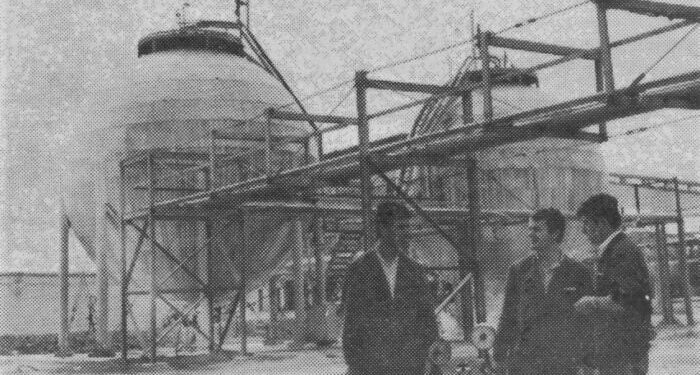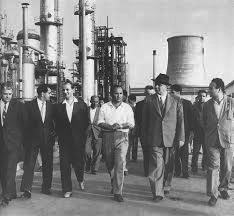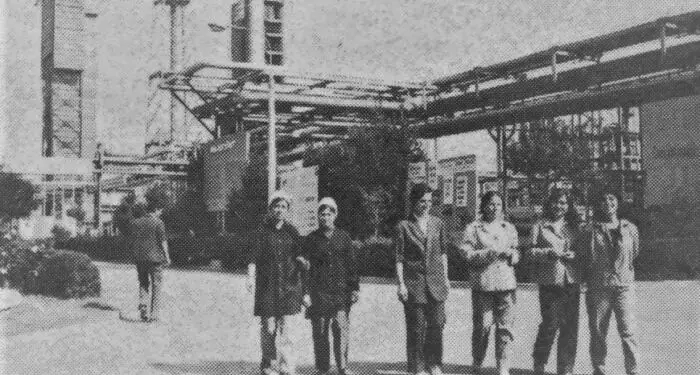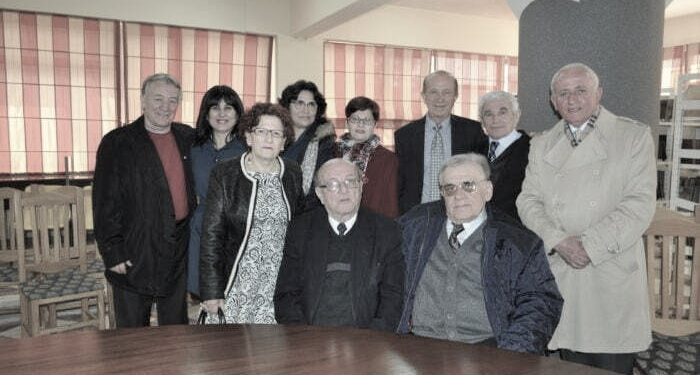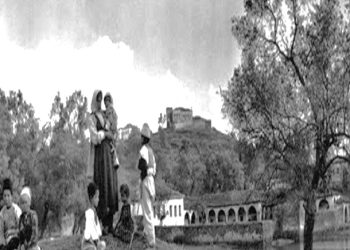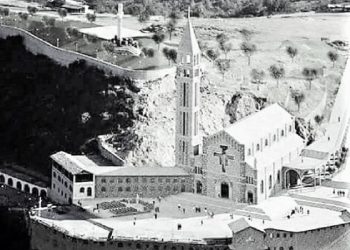By Demir Korita
-“Today, the giant of the chemical industry, kneeling among the rust, resembles a monument that Albanian stupidity has erected for itself”-
Memorie.al / Azotiku i Fieri, one of the greatest works of socialism that made a revolution in Albanian agriculture with nitrogen fertilizers, suffered the same fate that all of Albania suffered, it was destroyed in the most barbaric and unfortunate way. I will not go too long in the analysis of this problem, as it is not the purpose and object of this article, which is a sign of respect for the sweat and blood shed by hundreds of people in this work, a sign of respect for all those engineers, specialists and workers who not only worked there with dedication, but also sacrificed their lives and youth. This memory and treatment on the 50th anniversary of the creation of Azotik is also a tribute to all those people who gave their lives there, but also to all those veterans and retirees who worked there and who turn their heads with nostalgia every day from the field of Driza, who for them was their bread and life. This writing is also like a tribute to that lying giant himself, covered by rust, which proves how far human animality reaches at certain moments…!? Today, what is left of Azotik, is a monument that Albanian stupidity has erected for itself.
***
Azotik was one of the most magnificent works built during the period of socialism. The rise of Nitrogen, Ammonium Nitrate, would have a direct impact on the development of agriculture and the increase in yields of agricultural crops at that time. Likewise, its by-products, such as oxygen and nitrogen, would be used in the metals and health industries.
Azotik was in the wake of the country’s strategic development projects. It is good that today’s reader and the generations to come should know the reasons that influenced the construction of Azotik in the district of Fier, since certain, ignorant individuals have it on the tip of their tongues to reject everything built during that period. But the analysis of this problem belongs to the time.
For the establishment of a Chemical-Nitrogen Plant. it was talked about as early as 1957-1958, that it would be established by the former Soviet Union. With the breakdown of bilateral relations, this project was not realized. It was then considered to join the former German Democratic Republic. But with the separation of Albania from the former socialist camp, this project failed again.
After 1961, Albania led the course of cooperation in all fields with China. Under these conditions, our country asked to build some chemical, metallurgical and hydropower industry works, where China supported the presented projects. Under these conditions, the Albanian government in the third five-year plan, 1961-1966, declared the objectives it would achieve in the field of industrialization of the country, for the transition of our country from the stage of an industrial agricultural country to an industrial-agricultural country.
For the construction of the Ammonium Nitrate plant, the state of the time and China made an agreement for the purchase of machinery and equipment and the patent of the world’s most powerful chemical industry production company “Montecatini”, based in Novara, Italy.
In order to determine the most possible region, where Azotiku would be built, and the Albanian and Chinese specialists determined the climatic-geographical-geodesic possibilities, but also the economic-social ones, and they turned out to be more suitable in Fier, where it would also be built TEC-i 100 Mega (100 thousand kW hours).
Fier was located in the vicinity of the Patos-Marinez oil-bearing area and in the village of Kafaraj, large amounts of drinking water had been discovered, where the Fier-Rrogozhine railway would soon be built, which would solve the problem of chemical fertilizers and oil products from the Refinery of Oil nearby. Urban employee transport of 5 km was more favored. After three variants, in the valley of Peshtan, in Levan via Frakulla and Kafaraj, in the field of the village of Drizë, on the edge of Gjanica, the construction in the field of Drizë was considered more suitable.
The wind rose did not pass through the city of Fier, since for most of the year; the winds flowed towards the southwest of the area, where the pollution of the city was avoided. This was one of the arguments, along with others, that decided the time for the construction of Azotik in Fier, not taking into account some ecological problems, which the inhabitants of the surrounding villages, those of their city, have rightly criticized.
On November 25, 1964, in the field of Driza, the foundation stone was laid, which announced the start of the Azotik works. Engineer Rrahman Hanku was entrusted with the leadership and construction-assembly, which later rose to the position of Minister of Industry. For the administration of the Plant, in August 1964, the representation of the Plant was created with chemical engineer, Petrika Ballauri, a few months later; Koço Nika was appointed deputy director, coming from the position of the chairman of the Executive Committee of Tepelena.
About 3,000 workers were hired for the basic construction of the plant’s columns, those of the compressors, including soldiers from labor unions who worked in three shifts.
Many craftsmen from Dibra, such as: Barjam Gjini, Liman Gjini, Rushit Arapi, Nebi Kaduzi, etc., under the direction of the talented engineer, Ilo Pajçini, were engaged in the construction of cooling towers, 55 meters high. A rather difficult work, which was completed in a record time of 7 months.
Under the direction of the site director, Isidor Siliq, the bases of the compressors were built, an extremely difficult process. In April 1965, the first Chinese specialists arrived and then the Italian ones, who would follow and direct the works for the assembly of the Azotik units.
In 1965, the drivers Koço Afezolli and Met Delvina (“Heroes of Socialist Work”) transported giant columns of synthesis, acid, from the port of Durrës to Azotik.
In March 1965, 39 specialists, engineers and technicians from various fields of production, especially oil, went to the People’s Republic of China to qualify near the chemical plants of Lan Xout and the commissioning of Azotic, who were: Ing. Safa Kumbaro, Eng. Thanas Merkuri, Eng. Theodhori Papajorgji, Bahri Hazizi, Njazi Xhafa, Petraq Adhamopulli, Nikollaq Xhaxho, Kristo Pleqi, Leonidha Marku, Toli Gushi, Anastas Boçova, Simon Ngjela, Andrea Duda, Kleanthi Pogaçe, Sifi Pelari, Piro Mali, Harilla Kulari, Berti Kuko, Nexhat Memisha , Vangjel Dore, Viktor Rrapushi, Bashkim Bani, Arqile Spiro, Trifon Dimo, Ali Zajmi, Jovan Prifti, Llazar Zarka, Hetem Sula, Nako Leskaj, Lavdosh Veizi, Vangjush Orgocka, Lavdosh Ahmeti, Bashkim Bani.
A part of the group of specialists, after six months of qualification in China, 6 engineers and 6 technicians, went for specialization in chemical plants in Italy, such as: Safa Kumbaro, Theodhori Papajorgji, Thanas Merkuri, Ali Zajmi, Et’hem Sula, Llazar Zarka , Bahri Hazizi, Toli Gushi, Thoma Čuko, Koli Xhaxho, Harilla Kulari.
In July-August 1965, construction works began in a grand style. On February 25, 1966, the installers erected the first column of the decarbonation department and then the four 50-ton nitric acid columns, ammonia synthesis, compressors, nitric acid reactor, etc.
The leaders of the construction sites, such as: Qemal Mançe, Eng. Gaqo Pandavinji, Eng. Agim Paluka, assembly director Eng. Safa Abazi and assembly brigadier, Miti Sota, chief energy officer, Berti Lalo, as. Eng. Moamer Sala, welders Pano Gazheli, File Bleta, Luan Hasani, etc.
In April and July 1966, the first courses were opened near Azotik, for the qualification of young workers, who would launch Azotik. They were all 18 years old, just graduated from general high school. The others came from the high technological schools of Kuçova, as well as from the two-year schools of Tirana, Vlora and Kuçova, specialized in mechanics, assemblers, adjusters, electricians and plumbers.
On May 10, 1966, all the engineering and technical specialists from China and Italy returned to Fier, who would lead the works for the commissioning of Azotik and the preparation of trainees for the release of Azotik.
In the fall of 1966, the assembly of the Azotik wards was almost complete. Foreign specialists came from the chemical company “Montecatini”, German specialists for “Linden” (department of air separation into oxygen and hydrogen), as well as other specialists from France, China, etc.
On February 21, 1967, 53% nitric acid was produced and on February 23, 1967, the first ammonium nitrate, of the Albanian brand, was produced with 33.5% nitrogen content. After 5 months of intensive work, Azotik’s production capacity reached 340 tons in 24 hours. With the production of nitrogen fertilizer, yields in agricultural crops were significantly improved, up to 4-5 times kv. for hectare, as high quality fertilizer. Our country exported chemical fertilizer to several European countries.
Azotik turned into a school of work experience and production for many other branches of industry. The continuation of evening schools without breaking from work and engineering, the Chemical-Industrial branch, (a branch of the University of Tirana, here in Fier), strongly influenced the rise to a higher technical-professional level of Azotic specialists, where for a period of 10 years, it became possible for most of them to achieve high qualification of the workplace. In these schools, talented engineers taught as pedagogues, such as: Gazmend Gjyli, Kosta Gjoka, Nako Leskaj, Alo Begatoraj, Kahreman Vezi, etc.
In those years, the cultural-artistic activities took a big development, where the variety show and the Azotik ensemble worked, in which many young men and women participated as comedians, with the unforgettable artistic director Agim Dollani and comedians, such as: Todi Llupi (“Deserved Artist”) and lyrical singers, Violeta Manshani, Luli Gjerazi, Ylli Cakrani, Bruna Sota, Xhevrie and Rita Dollani, participants in festivals of light and popular Albanian music, etc.
Among the employees of this chemical giant, interprovincial ties were strengthened, as many specialists and workers came from other provinces of the country, with different levels, psychology and concepts. But due to the influence of intellectual work and the radiation of a part of the elements with a high cultural baggage, they influenced the professional-citizen and social formation. Family visits, participation in weddings, joys, sorrows and festive ceremonies, excursions, etc., caused the employees to strengthen their love and respect between them.
Azotik was one of the greatest and most beautiful experiences of Albanian life and work, a great intellectual and cultural investment, that, despite the fact that it no longer exists, its radiation is felt everywhere that works with honesty and dedication.
Honor and respect for employees and engineering-technical personnel
Azotik i Fier had 25 years of life, it was created in 1967 and was destroyed in 1997. In this time segment, a heroic work was done by heroic people, which we are glad to remember with respect on this anniversary of its creation We honor all the engineering and technical personnel, employees and administration, who together throughout the life of Azotik, exalted the name of this gigantic work of the chemical industry, among the vanguards in the country, with the highest title of the time, “Hero of Labor Socialist”.
First of all, we remember those who gave their lives in the line of duty in this work, who will remain in the Book of Honor of the history of Azotic, as its heroes, such as:
Andrea Duda, Lavdosh Velaj, Vasil Panda, Muharrem Logli and the talented engineer, Ibrahim Krasniqi, who gave his life during the commissioning of the 12th Plant at the Metallurgical Combine of Elbasan.
Many of the engineering-technical cadres, for their skills and intellectual level, were charged with important tasks in the central bodies of the party and the state, in the local government, in the enterprises of the district, such as: Qiriako Mihali, Bahri Hazizi, Lavdosh Ahmetaj, Koli Xhaxho, Spiro Sofroni, Harilla Kulari, Berti Hajnaj, Nexhip Agaraj, Lexi Lako, Haxhi Gashi, Vera Seraj, etc.
An outstanding contribution to the organization and direction of work and production was given by its leaders at several levels:
Petrika Ballauri, Qirjako Mihali, Safa Kumbaro, Thanas Merkuri, Koço Nika, Bahri Hazizi, Theodhori Papajorgji, Vangjush Orgocka, Berti Hajnaj, Kosta Gjoka, Nako Leskaj, Drita Sinani, Flora Duka, Andon Dëma, Gaqo Naço, Llazar and Miranda Zarka, Jani Coti, Jorgo Themeli, Lavdosh Ahmeti, Lavdosh Veizi, Kujtim Alite, Kosta Koçi, Sali Bollati, Kristo Pleqi, Agim Dollani, Pandeli Korumi, Haxhi Gashi, Rrauf Zena, Anastas Boçova, Rrapi Memisha, Jani Sila, etc., as well as many others specialists and craftsmen who, with their innovations, kept the Factory on high alert, among whom were: Toli Gusho, Berti Kuko, Muhamet Klosi, Nexhat Memisha, Hyso Nekekaj, Rrapi Nexhipi, Kardhash Mellori, Pano Gazheli, Miti Pjetri, Dhimitër Bilero, Thanas Nakuçi, Sifi Paloli, Kosta Zeno, Sotir Ziu, Ladi Shehu, Rakip Fejzullahu, Piro Dhima, Ali Liçaj, Qamil Hasani, Llambi Mêngjezi, File Bleta, Idajet Xhafa, etc.
A good part of the engineering-technical staff, specialists and workers have passed away, for whom we feel great pain and regret. They will remain forever in our hearts and memory, as we store many impressions and memories. Tribute to them in this 50th anniversary! These are: Ibrahim Krasniqi, Andrea Duda, Lavdosh Velaj, Vasil Panda, Muharrem Logli, Petrik Ballauri, Qiriako Mihali, Koço Nika, Peço Dhoska, Drita Rustemi, Lavdosh Ahmetaj, Lavdosh Veizi, Theodhori Papajorgji, Ali Zajmi, Kosta Koçi, Jani Çati . Papa, Hetem Suli, Josif Paloli, Tahir Stojku, Spiro Sofroni, Mihal Prifti, Kleanthi Pogaçe, Shemsi Hajnaj, Vita Dimo, Leko Toska, Nazmi Dyrmishi, Mirush Puto, Nasip Muka, Teki Sula, doctor Alex Llazari, Agron Tiço, Kosta Mone etc. Memorie.al




